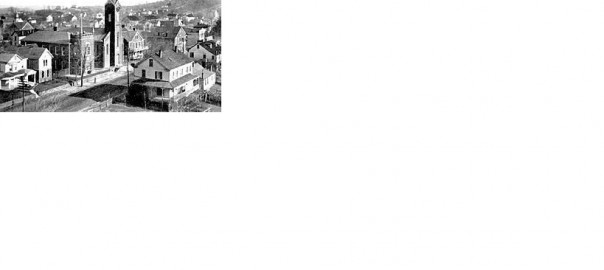
Troy, Indiana — In The Past 162 Years! Written July 22, 1966 by: unknown author
The town of Troy on July 22, 23 and 24, 1966, is commemorating its 162nd anniversary and at he same time is observing the State of Indiana’s Sesquicentenial with a three-day celebration and homecoming.
Troy’s history up to 50 years ago, was taken verbatim from a history compiled from best authorities and written by T. T. Gaesser. It was used in a program booklet published in 1916 when the Town of Troy joined other cities and owns in the State in celebrating Indiana’s Centennial.
Troy‘s History
-
- In 1803 the Pinkeshaws, an Indian tribe belonging to the Miami Indian Confederacy, held sway over the domain about Troy and Perry County.
- As early as 1795 white men had located near Troy, but in 1804 the first authentic white settlers, coming from Virginia and Kentucky, landed at Troy port just above the low land at the confluence of the placid Anderson river and the Ohio. The seagoing schooners and ships and smaller boats found here already, in 1800 and 1801, a good landing place, plenty of wood, etc., and Captain Tarascon named the port Troy. No doubt the presence in this port of an Indian maiden, vividly bringing to mind fair Helen of ancient Troy, had decided the christening. Fair Helen still has sister here, to stir up little wars of old.
- Troy‘s Origin
- In 1807 the United States conveyed 384.60 acres of land, in fractional sections 13 and 14 in Perry County to Walter Taylor, of Dubois County, which land included Troy. Before patent was issued Taylor transferred by assignment his certificate to James McDaniel, to whom patent was issued August 15, 1815. This patent will be found in the records of Spencer county, then a part of Perry. March 22, 1815, 120 acres of fractional section 13 were laid off as and for the town of Troy, Perry County, Indiana. The 120 acres referred to were deeded by James McDaniel, July 8, 1817, to Aquila Huff, as agent of Perry county, and reference therein made to the recorded plat of Troy. Francis Posey laid out the lots and offered same for sale in March, 1815. The tax list in July, 1815 for the county found Abraham Smythe Fulton, owner of 1000 acres of first-class land with a tax charge of $11.25, the largest and James McDaniel of Troy the second largest taxpayers. McDaniel paid $10.88 1/2 taxes on his tavern, four horses and a negro. (see related stories) Early Territorial History
- Prior to 1812, when Gibson and Warrick counties were created, all the present Perry was a part of Knox county. Warrick was comprised about the limits of Posey, Vanderburgh, Warrick, Spencer and Perry, County.
- George Huffman, grandfather of J. Riley Huffman, president of the Troy State Bank, and several brothers came from Lancaster, Pa., down the river in a flat boat and landed at Troy. They laid in a supply of provisions as best they could. On the big hill above Troy they killed two buffalo for meat, then worked their way on to Vincennes, Ind., getting there in the year 1804. About four years later he came back and settled in Hancock county, Ky., and in 1812 he returned to Indiana and settled or entered the most of the land in section 7, township 5 south, and range 3 west. The first taxes he paid were in Perry county, in June, 1815, in Troy. Then in an election held at Troy August 4 he voted. Next vote was cast at an election at Jonathan Greathouse’s, in Carter township, in August 1819, then being the north-west corner of Perry county. Perry County then extended west to the range line dividing ranges 5 and 6, thence south to the Ohio river. At that election George Huffman, Thomas Lincoln and other old settlers voted.
- In 1814 Perry county was created, and at first included parts of Dubois and Crawford besides about half of Spencer. In 1816 the creation of Spencer County again reduced Perry, but since then no change was made in Perry’s soil. And so it will stay until section 15 of the schedule of the 1851 Constitution is made use of, and Troy made the capital of a new county.
- The first Monday in April, 1815, found Troy the county seat, the court house being located in the home of James McDaniel Jr., where now the home of Thomas Hill stands.
- Troy‘s First Store
- The first store of any consequence was opened by Reuben Bates. He packed pork and flatboated the same, with corn and other farm products, to New Orleans, bringing in return sugar and other store goods to use in barter, money in those days being a scarce article. In the thirties he was still the leading trader and erected the old brick on the Bates hill on north Main Street.
